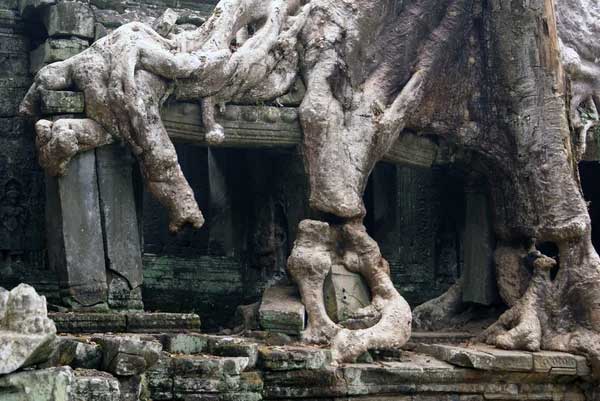Cambodia is a nation steeped in history, rich in culture, and undeniably marked by its impressive array of temples. These sacred structures not only showcase the architectural prowess of the Khmer Empire but also serve as a testament to the spiritual and artistic heritage of the Cambodian people. From the grandeur of Angkor Wat to the intimate embrace of nature at Ta Prohm, each temple tells a unique story that captivates visitors from around the globe. In this article, we will explore some of the top temples to visit in Cambodia, offering insights into their historical significance, architectural marvels, and the profound sense of spirituality they embody.
Exploring the Spiritual Heart of Cambodia’s Temples
The temples of Cambodia are not merely tourist attractions; they are the spiritual heartbeat of the nation. Each temple serves a dual purpose: as a place of worship and as a monument to the artistic and engineering skills of the Khmer Empire, which flourished from the 9th to the 15th centuries. They reflect the religious devotion of the Khmer people, who predominantly practiced Hinduism and later Theravada Buddhism. As you navigate through these ancient sites, you can witness the deep connection between spirituality and daily life that has persisted throughout Cambodia’s tumultuous history.
Visiting these temples offers a glimpse into the socio-political landscape of the past. The temples often served as cultural hubs, where art, music, and dance flourished. They were also the backdrop for significant historical events, making them crucial to understanding Cambodia’s identity. Each temple has its own unique story, from its construction to its role in the community, and exploring these narratives enriches the overall experience for visitors.
The architectural styles found within these temples can be categorized into various periods and influences, showcasing an evolution in design and technique over centuries. While many of the temples exhibit the classic Khmer style characterized by intricate carvings and towering spires, others reveal a blend of influences, hinting at Cambodia’s interactions with neighboring cultures. This architectural diversity is part of what makes temple-hopping in Cambodia an enthralling adventure.
Moreover, the temples are set against an equally stunning backdrop of lush landscapes and the many natural wonders of the country. The juxtaposition of stone structures with the vibrant green of tropical forests, rice paddies, and the flowing rivers creates a captivating visual experience that adds to the spiritual ambiance. This harmony between nature and architecture is integral to the concept of sacred space in Khmer culture.
As visitors explore these ancient sites, they can also engage with local traditions and practices that have been passed down through generations. Many temple communities continue to uphold rituals that reflect their deep-rooted beliefs, allowing visitors to witness the living culture of Cambodia. This interaction with local monks and temple caretakers offers a unique perspective on how spiritual practices adapt and evolve while maintaining their core values.
In conclusion, the temples of Cambodia are more than just remnants of a bygone era; they are vibrant repositories of faith, culture, and history that continue to inspire awe and reverence among those who visit. With each temple possessing its own unique allure, travelers are encouraged to delve into the stories that make each site a vital part of Cambodia’s spiritual heart.
Angkor Wat: A Marvel of Ancient Architecture and Art
Angkor Wat is undoubtedly the crown jewel of Cambodia’s temple complex and one of the most significant archaeological sites in Southeast Asia. Built in the early 12th century during the reign of King Suryavarman II, Angkor Wat was originally constructed as a Hindu temple dedicated to the god Vishnu. Over time, it transitioned into a Buddhist temple, reflecting the religious shifts that have occurred in the region. Its sheer size and grandeur make it a must-visit site for anyone traveling to Cambodia.
The architectural design of Angkor Wat is a testament to the ingenuity of Khmer engineers and artisans. Covering over 162 hectares, it is the largest religious monument in the world. The temple is designed in the classic Khmer style, with its central tower symbolizing Mount Meru, the axis of the universe in Hindu and Buddhist cosmology. Visitors are often left in awe of the meticulous layout, which incorporates intricate bas-reliefs and sculptures that narrate stories from the Hindu epics, such as the Ramayana and Mahabharata.
Below is a table summarizing some of the most remarkable temples worth visiting:
| Temple Name | Unique Feature | Location |
|---|---|---|
| Angkor Wat | Largest religious monument in the world | Siem Reap |
| Bayon Temple | Towers with 200+ carved smiling faces | Angkor Thom |
| Ta Prohm | Trees growing through temple ruins | Angkor Archaeological Park |
One of the most striking features of Angkor Wat is its stunning bas-reliefs, which stretch for over 800 meters. These carvings depict various scenes from mythology, daily life, and historic battles, offering insights into the cultural and spiritual life of the Khmer people. Art historians often regard these carvings as some of the finest examples of classical art in Southeast Asia, showcasing the incredible skill and dedication of the artisans who worked on them.
Visitors can also enjoy the breathtaking sunrise views over Angkor Wat, which has become an iconic image associated with travel to Cambodia. The ethereal glow of the rising sun casting shadows over the temple’s silhouette creates a magical atmosphere that draws thousands of photographers and early risers each day. This tranquil moment provides an opportunity for reflection and appreciation of the temple’s beauty and significance.
Despite its popularity, Angkor Wat has managed to retain a sense of serenity, allowing visitors to connect with its spiritual essence. The temple’s vast courtyards and serene surroundings provide ample space to explore and contemplate. As you walk through the corridors adorned with ancient carvings, you can sense the weight of history and spirituality that permeates the air, inviting introspection and reverence.
In summary, Angkor Wat stands as a monumental achievement of Khmer architecture and artistry, embodying the spiritual devotion of the people who built it. Its grandeur, intricate detailing, and historical significance make it an essential destination for anyone looking to understand Cambodia’s rich heritage.
Bayon Temple: The Enigmatic Faces of Khmer Culture
Nestled within the ancient city of Angkor Thom, Bayon Temple is renowned for its distinctive architecture and the enigmatic stone faces that adorn its towers. Constructed in the late 12th to early 13th centuries during the reign of King Jayavarman VII, Bayon represents the transition from Hinduism to Mahayana Buddhism in Khmer culture. The temple’s design reflects the king’s vision of a cosmopolitan society, blending diverse influences and symbolizing the unity of his empire.
One of the most captivating aspects of Bayon Temple is its 216 large stone faces, which many believe represent Avalokiteshvara, the Bodhisattva of Compassion. The serenity and smile of these faces have intrigued visitors and scholars alike, giving the temple a mystique that resonates through time. The faces are carved with remarkable precision, and their expressions seem to change depending on the angle from which they are viewed, adding to the temple’s enigmatic allure.
Exploring Bayon Temple is like wandering through a maze of history and spirituality. The temple’s layout is characterized by a series of galleries, courtyard, and towering spires, all interconnected in a way that encourages exploration. Each corner reveals new carvings and sculptures, depicting scenes from the daily life of the Khmer people, as well as significant historical events. This rich narrative tapestry provides visitors with a deeper understanding of the cultural and political milieu of the time.
The surrounding area of Angkor Thom, which includes the impressive gates and the Elephant Terrace, enhances the experience of visiting Bayon Temple. As you walk through the grand entryway, the immense stone faces peering down evoke a sense of awe, allowing you to appreciate the significance of this historic city. The combination of the temple’s grandeur and the historical context enriches the overall visit.
In addition to its architectural and artistic features, Bayon Temple is a vital spiritual site for many Cambodians. Locals often come to pay their respects, and the temple is still a place of worship for some Buddhist practitioners. This living connection to spirituality adds a layer of depth to the experience for visitors, as they witness the continuous thread of faith that runs through the site.
In conclusion, Bayon Temple stands as a remarkable example of Khmer artistry and architectural innovation, embodying the complexities of religious and cultural transitions in Cambodia. Its enigmatic stone faces and intricate carvings invite visitors to delve into the mysteries of the past, making it an essential stop on any journey through Cambodia’s rich spiritual landscape.
Ta Prohm: Nature’s Embrace of Historic Ruins
Ta Prohm is a striking illustration of nature reclaiming its territory, making it one of the most atmospheric and photogenic temple sites in Cambodia. Constructed in the late 12th century and dedicated to the mother of King Jayavarman VII, Ta Prohm was originally intended as a monastery and university for Buddhist monks. What sets this temple apart from others in the Angkor complex is its unique blend of architectural ruins and the encroachment of lush vegetation, creating a hauntingly beautiful spectacle.
As you approach Ta Prohm, the towering trees and sprawling roots that envelop the temple’s stone structures create a surreal landscape that feels almost otherworldly. The enormous banyan trees, in particular, have grown over and around the ruins, intertwining with the stone walls and offering a poignant reminder of nature’s power and resilience. This juxtaposition of man-made and natural beauty captures the imagination of every visitor, creating a captivating experience.
The design of Ta Prohm is also reflective of the traditional Khmer architectural style, featuring intricate carvings and bas-reliefs that depict various deities and mythological scenes. Though much of the temple has succumbed to the forces of nature, the remaining artistry showcases the skill of the artisans who constructed it. The remaining carvings offer a glimpse into the temple’s original splendor and the devotion that went into its creation.
In 2009, Ta Prohm was designated a UNESCO World Heritage Site, recognizing its cultural and historical significance. The site is not just important for its architectural marvels but also for its role in demonstrating the Khmer Empire’s relationship with nature. Efforts to preserve the temple amidst the encroaching jungle have sparked discussions about conservation and restoration practices that respect both history and the environment.
Visitors to Ta Prohm often find themselves lost in thought as they wander through the temple’s atmospheric halls. The dapple
 Indochina travel guides All travel guides of Vietnam, Cambodia, Laos, Thailand, Myanmar.
Indochina travel guides All travel guides of Vietnam, Cambodia, Laos, Thailand, Myanmar.


‘Intricate carvings’ really caught my attention. I appreciate the artistry in these temples.
I’ve heard about the sunrise at Angkor Wat; it must be breathtaking in person!
This article really opened my eyes to the history of Cambodia’s temples. I had no idea they were so important!
‘The living culture’ aspect is very interesting. It shows how traditions continue over time.
I loved learning about Angkor Wat! The architecture sounds amazing, and I want to see those carvings.
Bayon Temple’s faces are so intriguing! I would like to visit and see them up close.
‘Cultural hubs’ sound like wonderful places to learn more about Khmer history.
Ta Prohm looks like a beautiful mix of nature and history. I can’t wait to explore it!
‘Each temple has its own unique story.’ This makes me excited to discover more about them!
The spiritual connection of these temples is fascinating. It’s nice to see how culture and faith intertwine.